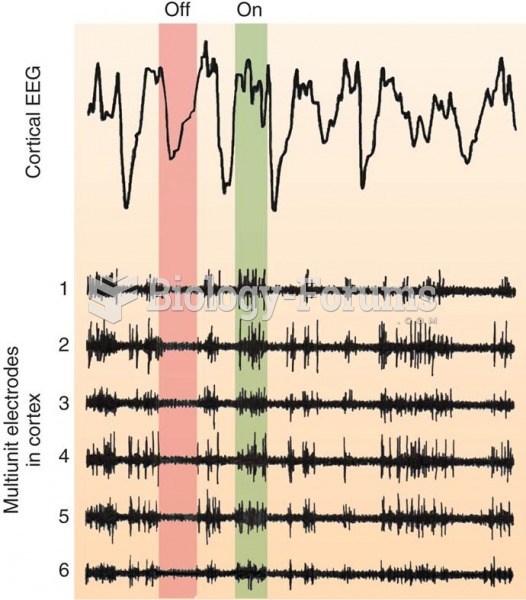|
|
|
Asthma-like symptoms were first recorded about 3,500 years ago in Egypt. The first manuscript specifically written about asthma was in the year 1190, describing a condition characterized by sudden breathlessness. The treatments listed in this manuscript include chicken soup, herbs, and sexual abstinence.
Blood is approximately twice as thick as water because of the cells and other components found in it.
Only one in 10 cancer deaths is caused by the primary tumor. The vast majority of cancer mortality is caused by cells breaking away from the main tumor and metastasizing to other parts of the body, such as the brain, bones, or liver.
Multiple experimental evidences have confirmed that at the molecular level, cancer is caused by lesions in cellular DNA.
By definition, when a medication is administered intravenously, its bioavailability is 100%.







